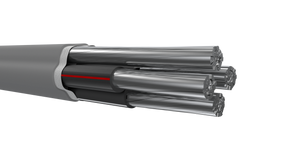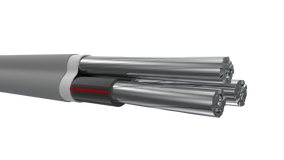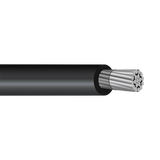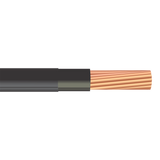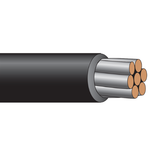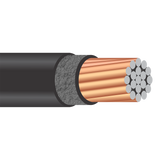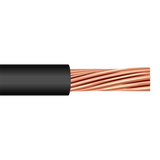How Many Amps Can 1/0 Gauge Wire Handle?
1/0 wire ampacity depends on various factors, including the conductor material, insulation type, and temperature rating.
1/0 copper wire ampacity for common insulation types like THHN/THWN-2 and RHW, at a temperature of 75°C, is 150A. 1 0 copper wire ampacity for XHHW-2 or USE insulation at 90°C is 170A.
1 0 aluminum wire ampacity for RHW or THWN insulation at 75°C is 120A. For 90°C-rated insulation like RHW-2 and THWN-2, it is 135A.
You need to consult the National Electrical Code (NEC) and local electrical codes to ensure safe and compliant use of 1/0 gauge wire in specific applications, as these ratings may vary based on local regulations and installation conditions.

Common Applications of 1/0 Cable
"1/0" wire, often read as "one aught" or simply "0" wire, is a size designation for electrical wire, specifically referring to the American Wire Gauge (AWG) standard for sizing. The AWG system denotes smaller numbers for thicker wires, and "aught" sizes (like 1/0, 2/0, 3/0, etc.) represent sizes larger than 0 AWG.
1/0 wire is heavy-duty and is employed in different electrical applications that require robust current-carrying capabilities. Its large diameter and high conductivity make it suitable for a range of uses.
- Vehicle batteries. One aught wire is utilized to connect vehicle batteries. It ensures a dependable power supply for automotive applications.
- Welding equipment. 1/0 wire is essential for effectively transmitting high currents. It provides the necessary heat to melt and fuse metals together and is commonly used in tasks like pipeline and bridge construction.
- Marine batteries. 1/0 gauge wire ensures reliable power distribution on boats and ships.
- Solar panel installations. This wire size connects various components within solar panel installations. It facilitates efficient energy generation and transmission.
- Wind turbine installations. 1/0 gauge wire effectively carries the electricity in challenging outdoor conditions, such as wind turbines.
- UPS (Uninterruptible Power Supply) Battery Connections. 1/0 gauge wire is vital in providing uninterrupted backup power during electrical outages. It safeguards critical systems and equipment.
- Power inverter connections. 1/0 gauge wire transmits DC power from batteries to inverters. It ensures the conversion of electricity for various residential and commercial applications.
- Residential service entrances. This wire size serves as a heavy-duty feeder cable for residential service entrances. It delivers power from the utility grid to homes and buildings.
- Heavy-duty machinery and equipment. 1/0 gauge wire connects heavy machinery and equipment to power sources. It ensures reliable power transmission for various industrial processes.
Popular Types of 1/0 AWG Wire
1/0 AWG wire comes in different shapes and types. Here are some of them:
- THHN/THWN. It is commonly used in conduit and cable trays for services, feeders, and branch circuits. It is suitable for both dry and wet locations.
- XHHW. XHHW wire is utilized in raceways, conduit, or open air for services, feeders, and branch circuits. It offers excellent resistance to heat and moisture.
- Welding Cable. It is specifically designed for connecting welding equipment. It's flexible and durable, capable of withstanding the high currents and harsh conditions associated with welding.
- Type W. This cable is used for heavy-duty service, such as power supply cables, mobile and portable electrical equipment, as well as motor and battery leads. It's known for its rugged construction.
- Type USE. Underground Service Entrance (USE) cable is designed for underground applications. It is typically used to deliver power to residential and commercial buildings from the utility grid.
- Type MTW. Machine tool wire (MTW) is employed in machine tools, appliances, and control circuits. It's suitable for various industrial and manufacturing applications.
- SER. Service Entrance Cable (SER) is often used as a panel feeder in residential and commercial applications. It provides a reliable connection between the electrical service and the building's electrical system.
- URD. Underground Residential Distribution (URD) cable is designed for underground power distribution in residential areas.
- Mobile Home Feeder. Mobile home feeder cable is used to supply power to mobile homes in suitable raceways.





